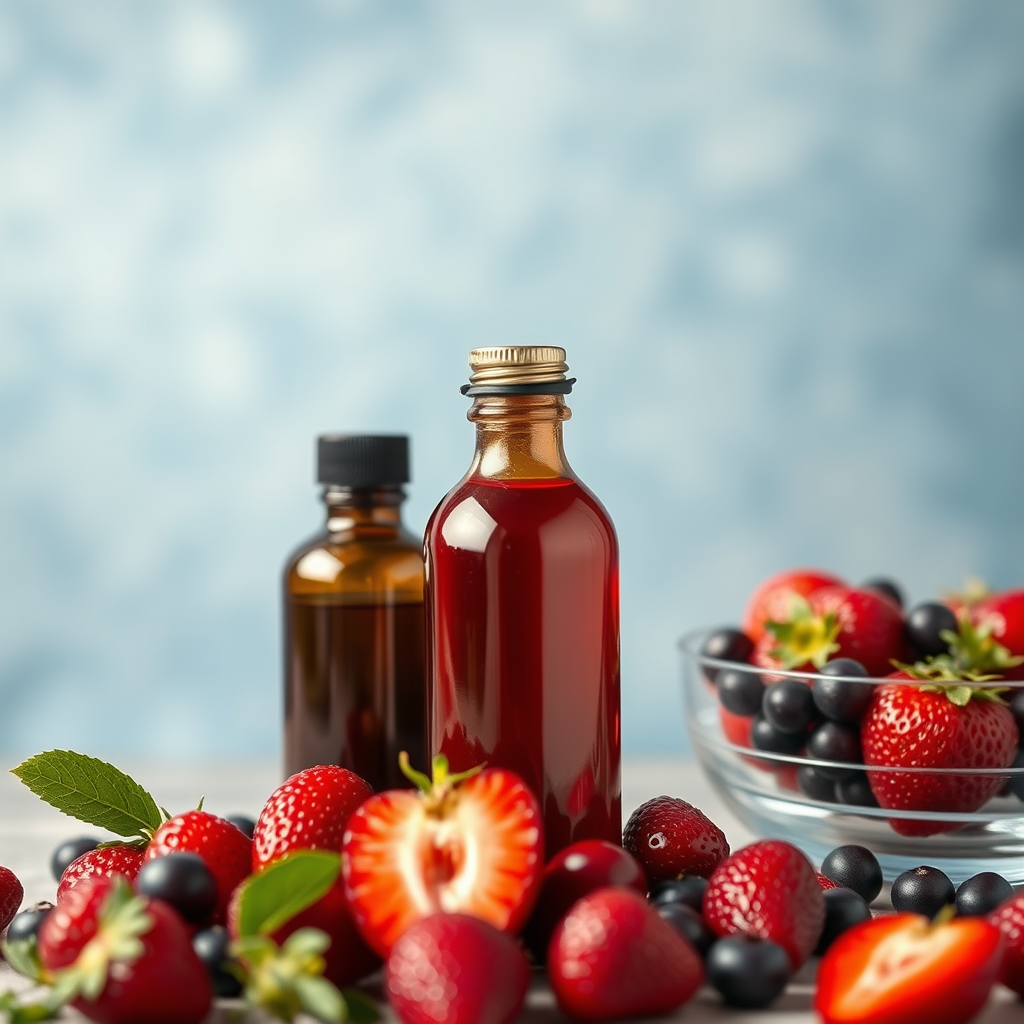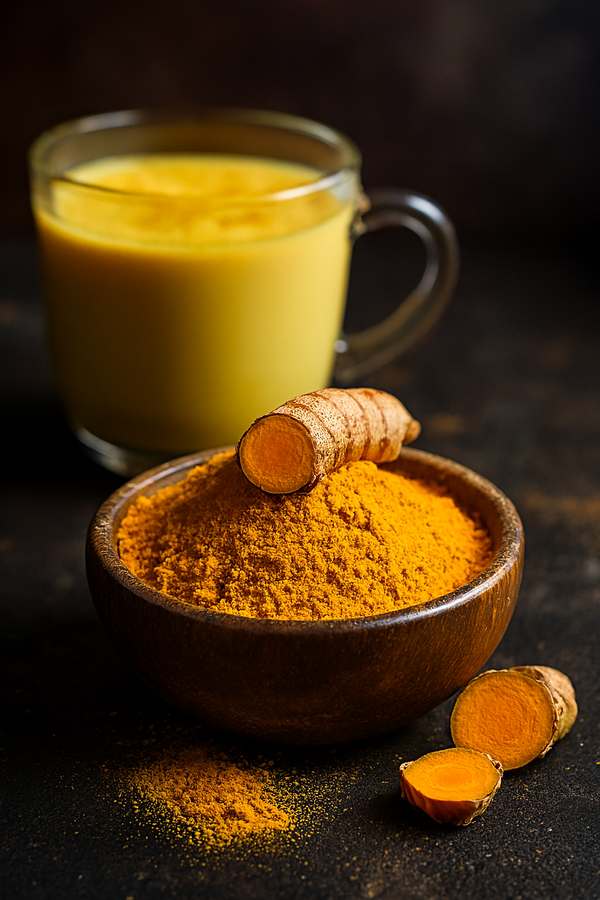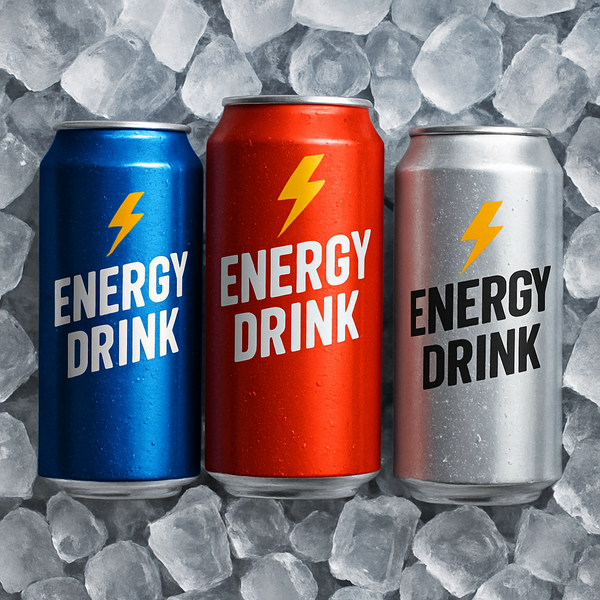Q&A: Antioxidants Uncovered: Are They Truly Beneficial and Can You Have Too Much?
Free radicals from normal body processes can lead to oxidative stress, increasing disease risk. Antioxidants like vitamin C, E, and phytochemicals neutralise these molecules. Balance is key—opt for a colourful diet rich in fruits, veggies, and grains, as too much from supplements can be harmful.🍎🥦


Take home messages:
|
Key Concept |
Take-Home Message |
|
Role
of Free Radicals and ROS |
Free radicals, especially reactive oxygen species (ROS), are highly
reactive due to unpaired electrons and can cause oxidative stress, leading to
chronic diseases if unchecked. |
|
Function
of Antioxidants |
Antioxidants neutralise free radicals by donating electrons,
preventing oxidative damage to macromolecules like DNA, proteins and lipids,
thereby protecting against diseases. |
|
Sources
of Antioxidants |
Key antioxidants include vitamin C, vitamin E, beta-carotene, selenium
and phytochemicals, all of which are best obtained from a diet rich in
fruits, vegetables, nuts and grains. |
|
Vitamin
C |
Vitamin C is crucial for preventing oxidative stress and enhancing
iron absorption but should be consumed within recommended limits to avoid
prooxidant effects. |
|
Vitamin
E |
Vitamin E protects cell membranes from oxidation but excessive intake
can interfere with vitamin K and increase bleeding risk, with high doses
potentially increasing mortality. |
|
Vitamin
A and Beta-Carotene |
Vitamin A and beta-carotene are important for preventing chronic
diseases but can act as prooxidants in excess, particularly in smokers,
increasing cancer risk. |
|
Selenium |
Selenium, essential for antioxidant defence, can be toxic at high
doses, leading to prooxidant effects and associated health risks. |
|
Phytochemicals
as Antioxidants |
Phytochemicals in plants have strong antioxidant properties that
protect against chronic diseases and support overall health. |
|
Importance of Food-Derived Antioxidants |
Whole foods provide a synergistic effect of antioxidants and
nutrients, making them more effective and safer than isolated supplements,
which may have adverse effects. |
|
Practical Recommendations |
A balanced diet rich in fruits, vegetables, grains and microgreens is
recommended for optimal antioxidant intake, with caution advised regarding
the use of supplements. |
|
Lifestyle Factors |
Beyond diet, lifestyle factors such as avoiding smoking, managing
stress and exercising regularly are essential for reducing oxidative stress
and maintaining health. |
Introduction
Our bodies utilise oxygen in metabolic reactions, which can result in the formation of unstable molecules known as free radicals. These free radicals possess an unpaired electron, making them highly reactive and eager to achieve stability by capturing an electron from other molecules. Many of these free radicals are oxygen-derived, referred to as reactive oxygen species (ROS), and are typically produced during metabolic processes involving oxygen. Additionally, ROS can be generated through external factors such as ultraviolet radiation, air pollution and tobacco smoke. While ROS play a beneficial role in immune defence mechanisms and programmed cell death (apoptosis)(1), an excess of these unstable molecules, particularly when they remain unchecked, can lead to an imbalance favouring prooxidants, resulting in oxidative stress. This oxidative stress can damage essential macromolecules in the body, including DNA, proteins and lipids, which has been linked to the theory that it is linked to the development of chronic diseases such as cancer, diabetes and cardiovascular diseases (2).
Antioxidants are chemical compounds that protect the body from the harmful effects of free radicals by donating one or more electrons to neutralize them, effectively halting chain reactions without becoming unstable themselves (3, 4). These antioxidants play a crucial role in protecting cognitive performance, slowing the aging process, and reducing the risk of various diseases (2). Key dietary antioxidants include vitamin C, vitamin E, beta-carotene (a precursor to vitamin A), and selenium, all of which are essential for normal physiological functioning (5). Because these antioxidants are also needed for normal physiological functioning, foods containing them are important to include in our diets. Non-nutrient compounds found in plants, known as phytochemicals, are also antioxidants (6).
Table: Foods rich in antioxidants
|
Category |
Examples |
|
Fruits |
Berries (blueberries, strawberries, raspberries),
pomegranates, citrus fruits (oranges, lemons, grapefruits) and grapes. |
|
Vegetables |
Leafy greens (spinach, kale), broccoli, Brussels
sprouts and bell peppers. |
|
Nuts and Seeds |
Almonds, walnuts, sunflower seeds and flaxseeds. |
|
Legumes |
Beans (black beans, kidney beans), lentils and
chickpeas. |
|
Grains |
Whole grains (oats, quinoa, brown rice), millet
and barley. |
|
Herbs and Spices |
Turmeric, cinnamon, ginger, garlic and cloves. |
|
Beverages |
Green tea, black tea, and red wine. |
|
Dark Chocolate |
Contains flavonoids, which have antioxidant properties. |
|
Oils |
Olive oil, especially extra virgin olive oil. |
|
Microgreens |
Young plants like alfalfa, radish sprouts and pea
shoots. |
Together, the nutrients and non-nutrients with antioxidant activity limit free-radical formation, stimulate antioxidant enzyme activity, repair oxidative damage and support a healthy immune system (5). The importance of antioxidants has been highlighted extensively in both scientific literature and popular media due to their potential health benefits. Some studies suggest that a diet rich in antioxidants can help prevent diseases such as cancer, heart disease (3) and neurodegenerative conditions like Alzheimer's (7) and Parkinson’s disease (8).
The Role of Vitamin C in Antioxidant Defence
Vitamin C, a water-soluble vitamin, acts as a bodyguard for water-soluble substances in cells and body fluids, protecting tissues when the production of oxidants and free radicals exceeds the body’s ability to defend against them, a condition known as oxidative stress (5). Vitamin C also protects iron from oxidation in the small intestine, enhancing iron’s absorption. Because vitamin C is water-soluble, it is readily excreted, and toxicity symptoms such as gastrointestinal distress and diarrhoea are rare. However, excessive supplementation can lead to vitamin C quantities exceeding the body’s need. The tolerable upper level for vitamin C consumption is 2000 mg/day. Above this level, the beneficial effects on iron absorption can become harmful, as too much free iron can cause cellular damage typically inflicted by free radicals (9).
Research indicates that dietary vitamin C intake is inversely associated with certain cancers, such as oesophageal (10) and lung cancer (11), but not ovarian (12) or pancreatic cancer (13). It has significant cardiovascular benefits, with deficiencies linked to higher mortality from cardiovascular disease (14) and a lower risk of stroke (15) and metabolic syndrome (16) associated with higher dietary and circulating vitamin C levels. Additionally, a genetic variant affecting vitamin C concentrations suggests a causal link with age-related cataracts (17).
Vitamin C supplements are popular, but their benefits in disease prevention for populations with adequate dietary intake are debatable. Although high doses can potentially enhance uptake through the upregulation of specific transporters (18), the evidence supporting their superiority over dietary sources remains limited. Supplements have shown some benefits, such as improving endothelial function (26), reducing glucose levels in type 2 diabetes (27), and potentially shortening ICU stays (28). However, their effectiveness in preventing or treating conditions like stroke (16) and COVID-19 (33) is unclear, with no significant benefits observed in some meta-analyses. Thus, while supplements can be beneficial, especially in cases of deficiency, dietary sources of vitamin C are generally preferred for their comprehensive health benefits.
Vitamin E: A Fat-Soluble Antioxidant
Vitamin E is a collective name for several related tocopherols and tocotrienols, which are fat-soluble and have antioxidant properties. Of these, tocopherol is the most important antioxidant, protecting membranes from oxidation by reacting with lipid radicals (19). A prospective study from the SUN cohort found an inverse association between vitamin E intake and postmenopausal breast cancer (20).
Vitamin E toxicity is rare, but it is recommended that intake does not exceed 1000 mg/day, as excessive vitamin E could interfere with the blood-clotting action of vitamin K and enhance the effects of drugs used to oppose blood coagulation, causing bleeding (21). Summaries of experimental studies, such as meta-analyses, suggest that vitamin E supplementation may increase mortality (22).
The Dual Nature of Vitamin A and Beta-Carotene
Vitamin A and its precursor, beta-carotene, have antioxidant properties capable of protecting the body against type II diabetes (23), metabolic syndrome (24) and protecting the eyes from light damage and age-related macular degeneration (25). A meta-analysis of 15 articles found that higher dietary intake of vitamin A is associated with a reduced risk of ovarian cancer, particularly in North American populations (26). Vitamin A toxicity is a real possibility when concentrated amounts of preformed vitamin A in foods or supplements are consumed, exceeding 3000 mg/day and potentially discolouring the skin. In excess, this antioxidant may act as a prooxidant. While fruits and vegetables containing beta-carotene prevent cancer, the Beta-Carotene and Retinol Efficacy Trial (CARET) observed that smokers given beta-carotene and vitamin A supplements had increased rates of lung cancer (27). These results were subsequently confirmed by other studies (28).
Selenium: Essential Yet Potentially Harmful in High Doses
A systematic review and meta-analysis of randomised controlled trials found that antioxidant mixtures including selenium were associated with a decreased risk of cardiovascular disease and all-cause mortality, whereas mixtures without selenium did not show these benefits (29). A systematic review and meta-analysis of population-based prospective studies found that dietary intake of selenium at levels of ≥55 μg/day is associated with a decreased risk of cancer, with the protective effects being more pronounced in men and with supplemental selenium intake (8).
Our bodies must regulate selenium metabolism and transport because high doses (400 μg/day) are toxic. Toxicity symptoms include loss and brittleness of hair and nails, skin rash, fatigue, irritability and nervous system disorders, often presenting with a garlic breath odour (5). Selenium toxicity is characterised by prooxidant activities (30, 31).
Phytochemicals as Antioxidants
Phytochemicals are naturally occurring compounds found in plants that exhibit powerful antioxidant properties, playing a crucial role in protecting the body from oxidative stress and associated diseases (5). These compounds, which include flavonoids, carotenoids, and polyphenols, neutralise free radicals by donating electrons, thereby preventing cellular damage to vital macromolecules like DNA, proteins, and lipids. The antioxidant activity of phytochemicals contributes to reducing the risk of chronic conditions such as cardiovascular disease, cancer, and neurodegenerative disorders (reviewed by (32). Moreover, phytochemicals support the body's immune system and enhance overall health by modulating various biochemical pathways and gene expression. Found abundantly in fruits, vegetables, whole grains, nuts, and seeds, phytochemicals also contribute to the vibrant colours and flavours of plant-based foods, making them not only a key component of a healthy diet but also a protective agent against the detrimental effects of oxidative damage (5). The table below includes a selection of phytochemicals and their sources, highlighting the diversity of plant-based foods that contribute to antioxidant protection.
Table: Common Phytochemicals and Their Food Sources
|
Phytochemical |
Sources |
|
Flavonoids |
Apples, onions, dark chocolate, tea, berries |
|
Carotenoids |
Carrots, sweet potatoes, tomatoes, spinach, kale |
|
Polyphenols |
Berries, red wine, green tea, dark chocolate, nuts |
|
Lycopene |
Tomatoes, watermelon, pink grapefruit |
|
Resveratrol |
Red grapes, red wine, peanuts, blueberries |
|
Catechins |
Green tea, black tea, dark chocolate |
|
Anthocyanins |
Blueberries, blackberries, red cabbage, cherries |
|
Isoflavones |
Soybeans, tofu, soy milk, legumes |
|
Lignans |
Flaxseeds, whole grains, sesame seeds, vegetables |
|
Curcumin |
Turmeric |
The Importance of Food-Derived Antioxidants
The benefits of antioxidants are most pronounced when consumed as part of a whole food diet rather than as isolated supplements. Whole foods provide a synergistic effect of multiple nutrients working together. The interaction between different antioxidants and other nutrients in food is complex and not fully understood, while isolated supplements may not offer the same benefits. For example, a prospective study found that higher dietary total antioxidant capacity (TAC), but not supplemental TAC, is inversely associated with risks of pancreatic cancer incidence and mortality (33). High doses of antioxidant supplements can sometimes have adverse effects, such as increasing the risk of certain cancers (1). Consuming antioxidants through food is preferable, especially for smokers, as supplementation can increase lung cancer prevalence and mortality (27, 28). While food sources rarely cause toxicities, supplements can. Yang, Na (34) and co-workers examined the association between red meat consumption and lung cancer risk, finding that higher red meat intake increased lung cancer risk, especially in those with low or medium antioxidant intake from foods or supplements. However, no significant association was observed in individuals with the highest natural antioxidant intake, highlighting the potential protective role of dietary antioxidants in lung cancer prevention. A diet rich in fruits, vegetables, grains, and microgreens provides a wealth of nutrients with antioxidant properties and phytochemicals that may help prevent or improve chronic diseases.
Practical Recommendations
Enjoy a variety of fruits, vegetables including microgreens, grains legumes and nuts to get the antioxidant and other benefits they offer. Even though, chocolate and wine also contain antioxidants/phytochemicals, consuming them to increase antioxidant status are not recommended. If considering antioxidant supplements, it is advisable to consult with a healthcare professional to avoid potential negative interactions and ensure appropriate dosing. Diet is just one aspect of health. Regular exercise, adequate sleep and avoiding smoking and excessive alcohol consumption are also crucial for reducing oxidative stress and maintaining overall health.
Reflections
· Reflect on your current diet and identify which antioxidant-rich foods you already consume regularly. Consider the categories of fruits, vegetables, nuts, seeds, legumes, grains, herbs, spices, beverages, dark chocolate, oils and microgreens.
· Reflect on the concept of food synergy—the idea that whole foods provide a combination of nutrients that work together for better health outcomes.
· Assess any supplements you currently take and consider whether these supplements are necessary or if you can achieve the same benefits through dietary sources. Think about ways to incorporate more whole foods into your diet. Consider consulting with a healthcare professional, such as a dietitian, to evaluate your supplement needs and ensure you are making the best choices for your health.
· Reflect on lifestyle factors that may contribute to oxidative stress in your life, such as smoking, exposure to pollution, high-stress levels and lack of exercise. Identify at least one specific change you can make to reduce oxidative stress, such as incorporating regular physical activity, practicing stress management techniques, or reducing your exposure to environmental toxins.
Love what you’re reading? Share the knowledge! 📨 Forward this link to a friend who might also enjoy it.
References
1. Zahra KF, Lefter R, Ali A, Abdellah E-C, Trus C, Ciobica A, et al. The Involvement of the Oxidative Stress Status in Cancer Pathology: A Double View on the Role of the Antioxidants. Oxidative Medicine and Cellular Longevity. 2021;2021(1):9965916.
2. Ghezzi P, Jaquet V, Marcucci F, Schmidt H. The oxidative stress theory of disease: levels of evidence and epistemological aspects. Br J Pharmacol. 2017;174(12):1784-96.
3. ASPLUND K. Antioxidant vitamins in the prevention of cardiovascular disease: a systematic review. Journal of Internal Medicine. 2002;251(5):372-92.
4. Barber DA, Harris SR. Oxygen Free Radicals and Antioxidants: A Review: The use of antioxidant vitamin supplements to scavenge free radicals could decrease the risk of disease. American Pharmacy. 1994;34(9):26-35.
5. Whitney EN, Rolfes SR, Crowe T, Walsh A. Understanding nutrition: Cengage AU; 2019.
6. Guan R, Van Le Q, Yang H, Zhang D, Gu H, Yang Y, et al. A review of dietary phytochemicals and their relation to oxidative stress and human diseases. Chemosphere. 2021;271:129499.
7. Pritam P, Deka R, Bhardwaj A, Srivastava R, Kumar D, Jha AK, et al. Antioxidants in Alzheimer’s Disease: Current Therapeutic Significance and Future Prospects. Biology. 2022;11(2):212.
8. Talebi S, Ghoreishy SM, Jayedi A, Travica N, Mohammadi H. Dietary Antioxidants and Risk of Parkinson’s Disease: A Systematic Review and Dose–Response Meta-analysis of Observational Studies. Advances in Nutrition. 2022;13(5):1493-504.
9. Kaźmierczak-Barańska J, Boguszewska K, Adamus-Grabicka A, Karwowski BT. Two Faces of Vitamin C-Antioxidative and Pro-Oxidative Agent. Nutrients. 2020;12(5).
10. Bo Y, Lu Y, Zhao Y, Zhao E, Yuan L, Lu W, et al. Association between dietary vitamin C intake and risk of esophageal cancer: A dose–response meta‐analysis. International journal of cancer. 2016;138(8):1843-50.
11. Shareck M, Rousseau M-C, Koushik A, Siemiatycki J, Parent M-E. Inverse association between dietary intake of selected carotenoids and vitamin C and risk of lung cancer. Frontiers in oncology. 2017;7:23.
12. Long Y, Fei H, Xu S, Wen J, Ye L, Su Z. Association about dietary vitamin C intake on the risk of ovarian cancer: a meta-analysis. Bioscience reports. 2020;40(8):BSR20192385.
13. Hua YF, Wang GQ, Jiang W, Huang J, Chen GC, Lu CD. Vitamin C Intake and Pancreatic Cancer Risk: A Meta-Analysis of Published Case-Control and Cohort Studies. PloS one. 2016;11(2):e0148816.
14. Moser MA, Chun OK. Vitamin C and Heart Health: A Review Based on Findings from Epidemiologic Studies. Int J Mol Sci. 2016;17(8).
15. Chen GC, Lu DB, Pang Z, Liu QF. Vitamin C intake, circulating vitamin C and risk of stroke: a meta‐analysis of prospective studies. Journal of the American Heart Association. 2013;2(6):e000329.
16. Guo H, Ding J, Liu Q, Li Y, Liang J, Zhang Y. Vitamin C and metabolic syndrome: A meta-analysis of observational studies. Frontiers in nutrition. 2021;8:728880.
17. Ravindran RD, Sundaresan P, Krishnan T, Vashist P, Maraini G, Saravanan V, et al. Genetic variants in a sodium-dependent vitamin C transporter gene and age-related cataract. Br J Ophthalmol. 2019;103(9):1223-7.
18. Mason SA, Baptista R, Della Gatta PA, Yousif A, Russell AP, Wadley GD. High-dose vitamin C supplementation increases skeletal muscle vitamin C concentration and SVCT2 transporter expression but does not alter redox status in healthy males. Free Radical Biology and Medicine. 2014;77:130-8.
19. Herrera E, Barbas C. Vitamin E: action, metabolism and perspectives. J Physiol Biochem. 2001;57(2):43-56.
20. Fernandez-Lazaro CI, Martínez-González MÁ, Aguilera-Buenosvinos I, Gea A, Ruiz-Canela M, Romanos-Nanclares A, et al. Dietary Antioxidant Vitamins and Minerals and Breast Cancer Risk: Prospective Results from the SUN Cohort. Antioxidants. 2021;10(3):340.
21. Traber MG. Vitamin E and K interactions – a 50-year-old problem. Nutrition Reviews. 2008;66(11):624-9.
22. Miller ER, 3rd, Pastor-Barriuso R, Dalal D, Riemersma RA, Appel LJ, Guallar E. Meta-analysis: high-dosage vitamin E supplementation may increase all-cause mortality. Ann Intern Med. 2005;142(1):37-46.
23. Marcelino G, Machate DJ, Freitas KC, Hiane PA, Maldonade IR, Pott A, et al. β-Carotene: Preventive Role for Type 2 Diabetes Mellitus and Obesity: A Review. Molecules. 2020;25(24).
24. Beydoun MA, Chen X, Jha K, Beydoun HA, Zonderman AB, Canas JA. Carotenoids, vitamin A, and their association with the metabolic syndrome: a systematic review and meta-analysis. Nutrition Reviews. 2018;77(1):32-45.
25. Khoo HE, Ng HS, Yap WS, Goh HJH, Yim HS. Nutrients for Prevention of Macular Degeneration and Eye-Related Diseases. Antioxidants (Basel). 2019;8(4).
26. Wang Q, He C. Dietary vitamin A intake and the risk of ovarian cancer: a meta-analysis. Bioscience Reports. 2020;40(4).
27. Omenn GS, Goodman GE, Thornquist MD, Balmes J, Cullen MR, Glass A, et al. Risk factors for lung cancer and for intervention effects in CARET, the Beta-Carotene and Retinol Efficacy Trial. J Natl Cancer Inst. 1996;88(21):1550-9.
28. Bjelakovic G, Nikolova D, Gluud LL, Simonetti RG, Gluud C. Mortality in Randomized Trials of Antioxidant Supplements for Primary and Secondary Prevention: Systematic Review and Meta-analysis. Jama. 2007;297(8):842-57.
29. Jenkins DJA, Kitts D, Giovannucci EL, Sahye-Pudaruth S, Paquette M, Blanco Mejia S, et al. Selenium, antioxidants, cardiovascular disease, and all-cause mortality: a systematic review and meta-analysis of randomized controlled trials. The American Journal of Clinical Nutrition. 2020;112(6):1642-52.
30. Mézes M, Balogh K. Prooxidant mechanisms of selenium toxicity – a review. Acta Biologica Szegediensis. 2009;53(suppl.):15-8.
31. Zwolak I, Zaporowska H. Selenium interactions and toxicity: a review. Cell Biology and Toxicology. 2012;28(1):31-46.
32. Engwa GA. Free radicals and the role of plant phytochemicals as antioxidants against oxidative stress-related diseases. Phytochemicals: source of antioxidants and role in disease prevention BoD–Books on Demand. 2018;7:49-74.
33. Zhong G-C, Pu J-Y, Wu Y-L, Yi Z-J, Wan L, Wang K, et al. Total Antioxidant Capacity and Pancreatic Cancer Incidence and Mortality in the Prostate, Lung, Colorectal, and Ovarian Cancer Screening Trial. Cancer Epidemiology, Biomarkers & Prevention. 2020;29(5):1019-28.
34. Yang J, Na X, Li Z, Zhao A. Modification Role of Dietary Antioxidants in the Association of High Red Meat Intake and Lung Cancer Risk: Evidence from a Cancer Screening Trial. Antioxidants. 2024;13(7):799.
In the process of creating this work, the author employed ChatGPT 4 to streamline the text and to perform language editing.




